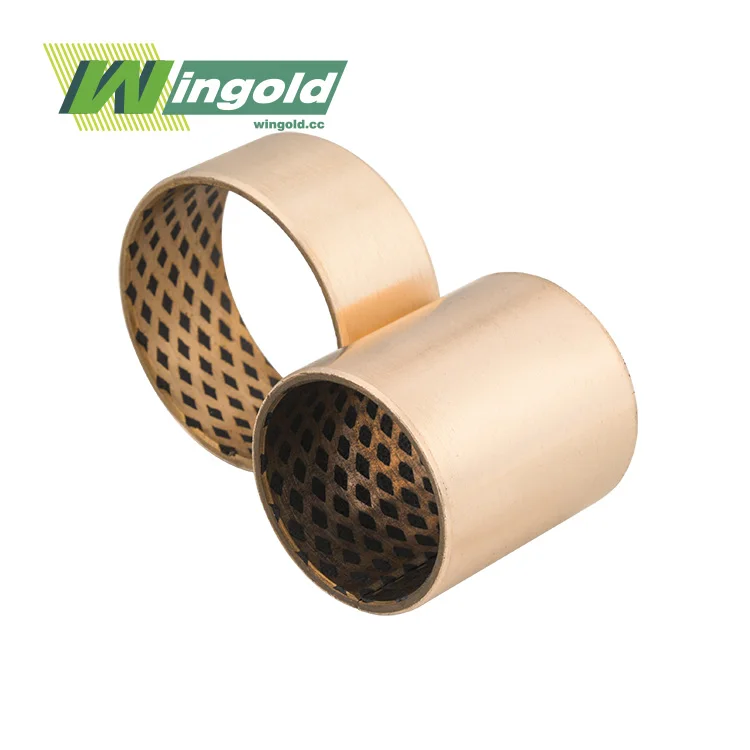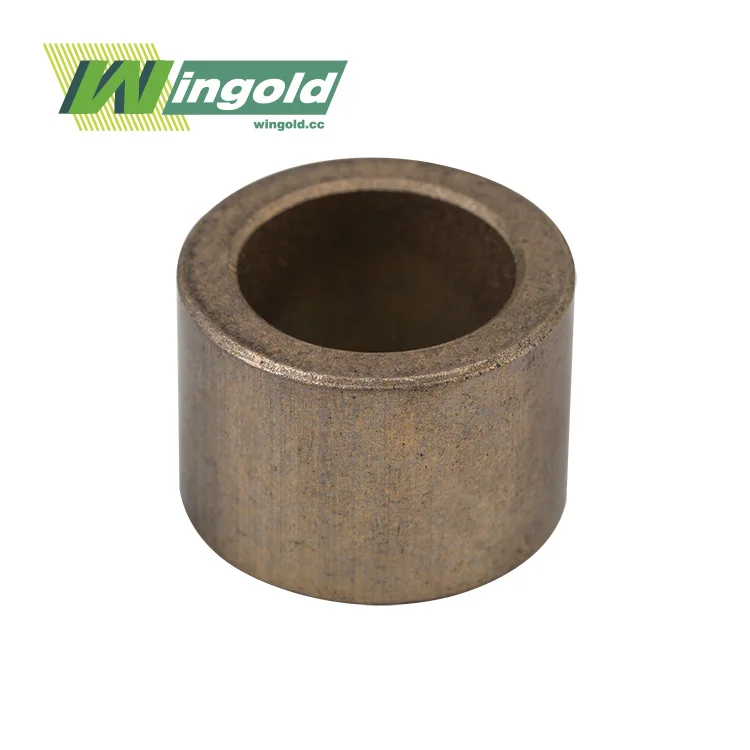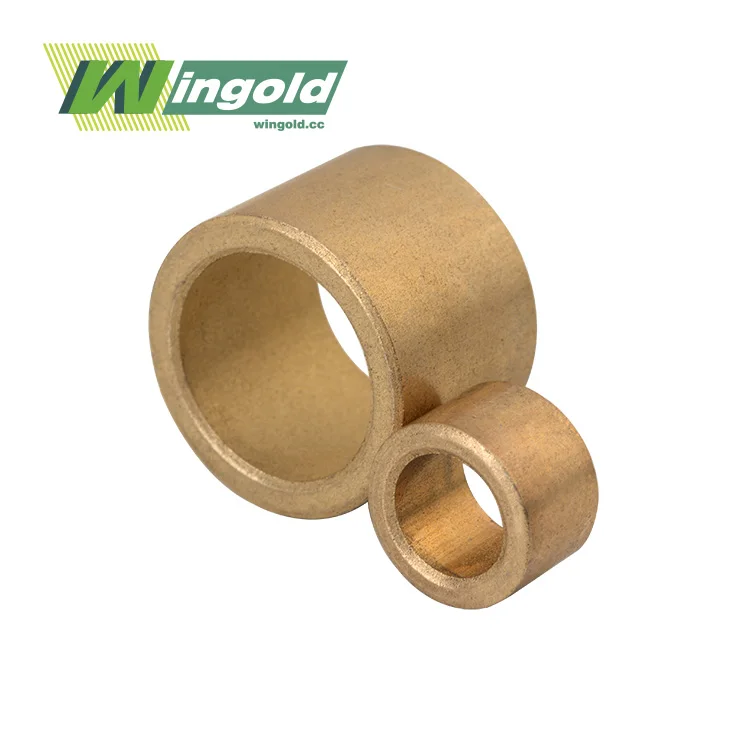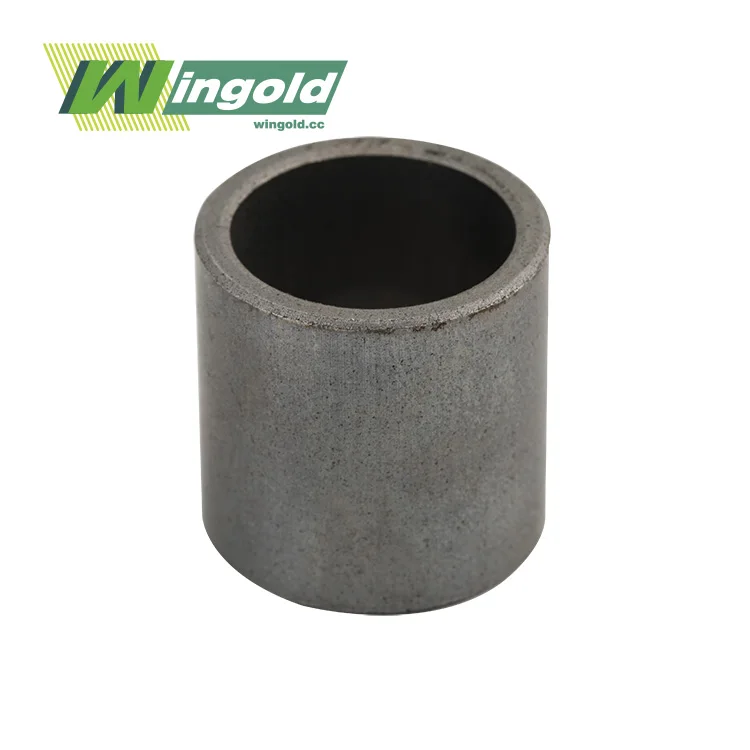
Grasping Brass Self-Lubricating Bearings
Composition and Properties of Brass Self-Lubricating Bearings
Brass self-lubricating bearings are engineered with a unique composition that sets them apart from conventional bearings. These bearings are crafted from high-quality brass alloys, typically consisting of copper and zinc, with embedded solid lubricants. The porous structure of the brass matrix allows for the retention and gradual release of lubricants during operation.
The composition of these bearings offers several advantageous properties:
- Excellent load-bearing capacity: Brass self-lubricating bearings can withstand substantial loads while maintaining their performance. This makes them suitable for demanding industrial applications where high stress is a constant factor.
- Low friction coefficient: The combination of brass alloy and solid lubricants results in exceptionally low friction, typically ranging from 0.02 to 0.25. This low friction translates to reduced wear and extended service life for both the bearing and the mating surface.
- Corrosion resistance: The brass composition provides good resistance to corrosion, making these bearings suitable for use in harsh environments and marine applications where exposure to corrosive elements is common.
- Wide temperature range: Brass self lubricating bearings maintain their performance across a broad temperature spectrum, typically from -40°C to +150°C. This ensures reliability in various operating conditions, from cold storage facilities to high-temperature industrial processes.
- Dimensional stability: The brass alloy used in these bearings exhibits excellent dimensional stability, maintaining its shape and size even under load and temperature variations. This characteristic is crucial for maintaining precision in machinery and equipment.
Advantages of Brass Self-Lubricating Bearings
Brass self-lubricating bearings offer numerous advantages that make them a preferred choice in many industrial applications:
- Maintenance-free operation: The self-lubricating nature of these bearings eliminates the need for regular lubrication, reducing maintenance costs and downtime.
- Environmental friendliness: By eliminating the need for external lubricants, these bearings contribute to a cleaner working environment and reduce the risk of contamination in sensitive applications.
- Cost-effectiveness: Despite a potentially higher initial cost, brass self-lubricating bearings offer long-term cost savings through reduced maintenance and extended service life.
- Versatility: These bearings perform well in a wide range of applications, from high-load industrial machinery to precision equipment in clean room environments.
- Noise reduction: The low friction characteristics of brass self-lubricating bearings contribute to quieter operation in machinery and equipment.
Selection Criteria for Brass Self-Lubricating Bearings
Load Capacity and Operating Conditions
When selecting brass self-lubricating bearings, it's crucial to consider the load capacity and operating conditions of your application. These factors significantly influence the performance and longevity of the bearing:
- Static and dynamic load: Assess both the static load (when the bearing is at rest) and dynamic load (during operation) that the bearing will experience. Brass self-lubricating bearings can typically handle loads up to 140 MPa, but it's essential to choose a bearing with a load capacity that exceeds your application's requirements to ensure a safety margin.
- Speed: Consider the rotational or linear speed at which the bearing will operate. While brass self-lubricating bearings perform well at various speeds, extremely high speeds may require additional considerations for heat dissipation.
- Temperature: Evaluate the operating temperature range of your application. Brass self lubricating bearings generally perform well from -40°C to +150°C, but it's important to select a bearing that can withstand the specific temperature extremes of your environment.
- Environmental factors: Consider factors such as humidity, presence of contaminants, and exposure to chemicals. While brass bearings offer good corrosion resistance, certain environments may require additional protective measures or alternative materials.
Dimensional Requirements and Tolerances
Accurate dimensional specifications are crucial for proper bearing selection and optimal performance:
- Inner and outer diameters: Determine the required inner and outer diameters of the bearing. Brass self-lubricating bearings are available in a wide range of sizes, typically from 5mm to 300mm inner diameter and 8mm to 350mm outer diameter.
- Length: Consider the required length of the bearing, which can range from 5mm to 500mm for standard brass self-lubricating bearings.
- Tolerances: Specify the required tolerances for the bearing dimensions. Tight tolerances may be necessary for precision applications, while broader tolerances may be acceptable for less critical uses.
- Clearance: Determine the appropriate clearance between the bearing and the shaft, taking into account factors such as thermal expansion and load distribution.
Applications and Industry-Specific Considerations
Common Applications for Brass Self-Lubricating Bearings
Brass self-lubricating bearings find use in a wide array of industries and applications due to their versatility and performance characteristics:
- Automotive: These bearings are used in various automotive components, including steering systems, suspension components, and pedal assemblies, where they provide smooth operation and long service life.
- Aerospace: In the aerospace industry, brass self-lubricating bearings are utilized in flight control systems, landing gear components, and cabin interior fittings, where reliability and low maintenance are paramount.
- Marine: The corrosion-resistant properties of brass make these bearings ideal for marine applications such as rudder bearings, propeller shaft bearings, and deck equipment.
- Industrial machinery: Brass self-lubricating bearings are widely used in various industrial machines, including conveyor systems, packaging equipment, and textile machinery, where they contribute to reduced downtime and maintenance costs.
- Agricultural equipment: These bearings are employed in agricultural machinery such as tractors, harvesters, and irrigation systems, where they must withstand harsh environmental conditions and heavy loads.
- Construction equipment: In construction machinery like excavators, cranes, and bulldozers, brass self-lubricating bearings provide reliable performance under high loads and challenging environments.
Industry-Specific Selection Considerations
When selecting brass self lubricating bearings for specific industries, consider the following factors:
- Food and pharmaceutical industries: In these sectors, choose bearings that comply with food-grade standards and are resistant to cleaning agents and sterilization processes.
- Chemical processing: For applications in the chemical industry, ensure the brass alloy and embedded lubricants are compatible with the chemicals present in the operating environment.
- Offshore and marine applications: Select bearings with enhanced corrosion resistance and the ability to withstand exposure to saltwater and marine environments.
- Aerospace and defense: Choose bearings that meet stringent industry standards for reliability, performance, and traceability.
- Heavy industry: For applications in steel mills, mining equipment, or heavy machinery, prioritize bearings with high load capacity and resistance to shock loads.
- Clean room environments: In industries such as electronics manufacturing or semiconductor production, select bearings that generate minimal particulates and can operate in clean room conditions.
Conclusion
Selecting the appropriate brass self lubricating bearing is a critical decision that can significantly impact the performance, efficiency, and longevity of your machinery or equipment. By carefully considering factors such as load capacity, operating conditions, dimensional requirements, and industry-specific needs, you can make an informed choice that optimizes your application's performance while minimizing maintenance requirements and operational costs.
Wingold Bearing offers a comprehensive range of brass self-lubricating bearings designed to meet the diverse needs of various industries. Our expert team is available to assist you in selecting the ideal bearing solution for your specific application. For personalized guidance and support in choosing the right brass self-lubricating bearing, please contact us at info@wingold.cc.
FAQ
What makes brass self-lubricating bearings different from traditional bearings?
Brass self-lubricating bearings contain embedded solid lubricants within their porous structure, eliminating the need for external lubrication and reducing maintenance requirements.
Can brass self-lubricating bearings operate in high-temperature environments?
Yes, these bearings typically perform well in temperatures ranging from -40°C to +150°C, making them suitable for various industrial applications.
Are brass self-lubricating bearings environmentally friendly?
Indeed, they are more environmentally friendly than traditional bearings as they eliminate the need for external lubricants, reducing the risk of contamination and waste.
How long do brass self-lubricating bearings typically last?
The lifespan of these bearings varies depending on the application, but they generally offer extended service life due to their low friction and wear characteristics.



